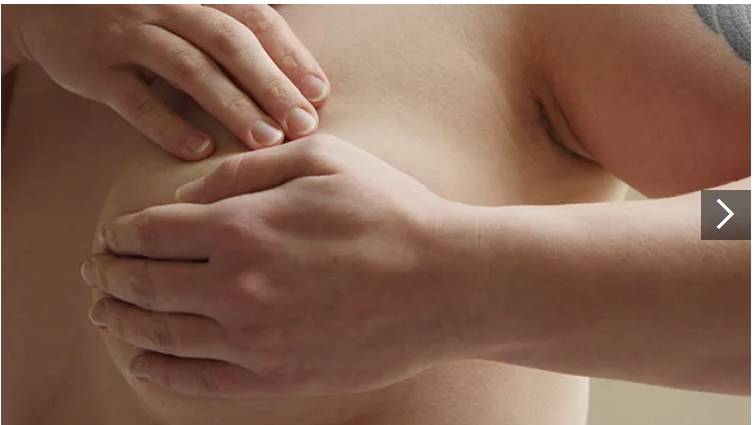Breast Cancer: A Comprehensive
Overview
Breast
cancer is one of the most common types of cancer affecting women worldwide,
although men can also be affected. It occurs when cells in the breast tissue
grow uncontrollably and form a tumor. If untreated, these cells can spread to
other parts of the body, leading to life-threatening complications. In recent
years, advancements in early detection and treatment have improved survival
rates, but awareness, prevention, and research remain critical in the fight
against this disease.
Anatomy of the Breast
Understanding
the anatomy of the breast helps to grasp how and where breast cancer develops.
The breast is composed of lobules (milk-producing glands), ducts (tubes that
carry milk to the nipple), and connective tissues (fat and fibrous tissue that
give the breast its shape). Most breast cancers begin in the lobules or ducts,
but in some cases, cancer can start in other tissues within the breast.
Types of Breast Cancer
There are
several types of breast cancer, broadly classified into two categories:
invasive and non-invasive (in situ).
1. Ductal Carcinoma In Situ (DCIS)
This is a
non-invasive cancer where abnormal cells are found in the lining of the breast
ducts but have not spread to surrounding tissue. DCIS is considered the earliest
form of breast cancer and is highly treatable if detected early.
2. Invasive Ductal Carcinoma (IDC)
IDC is the
most common type of breast cancer, making up about 80% of all cases. It begins
in the ducts but breaks through to invade surrounding breast tissue. From
there, it may spread to other parts of the body through the lymphatic system or
bloodstream.
3. Invasive Lobular Carcinoma (ILC)
ILC starts
in the lobules and spreads to surrounding tissues. It accounts for
approximately 10-15% of invasive breast cancers. ILC may be harder to detect
through mammograms because of its diffuse growth pattern.
4. Triple-Negative Breast Cancer (TNBC)
TNBC lacks
three specific receptors known to fuel most breast cancers: estrogen, progesterone,
and HER2. It is more aggressive and harder to treat than other types, as it
doesn’t respond to hormonal therapies or drugs targeting HER2 receptors.
5. HER2-Positive Breast Cancer
This type of
cancer tests positive for a protein called human epidermal growth factor
receptor 2 (HER2), which promotes the growth of cancer cells. HER2-positive
breast cancers tend to grow faster but can respond well to targeted therapies.
6. Inflammatory Breast Cancer (IBC)
A rare but
aggressive form of breast cancer, IBC causes the breast to appear red, swollen,
and inflamed. This occurs because cancer cells block lymph vessels in the skin,
preventing normal fluid drainage.
Risk Factors for Breast Cancer
Breast
cancer is influenced by a variety of risk factors, some controllable and others
beyond a person's control.
1. Age and Gender
The risk of
breast cancer increases with age, and women are significantly more likely to
develop it than men. Most diagnoses occur in women aged 50 and older.
2. Genetic Mutations
Mutations in
the BRCA1 and BRCA2 genes significantly increase the risk of breast cancer.
Women with these genetic mutations may have up to a 72% lifetime risk of
developing the disease. Other genetic mutations, such as those in the TP53 and
CHEK2 genes, also contribute to risk.
3. Family History
A strong
family history of breast cancer can increase the risk, especially if close
relatives were diagnosed at an early age or had cancer in both breasts.
4. Hormonal Factors
Extended
exposure to estrogen and progesterone, such as starting menstruation early
(before age 12), late menopause (after age 55), or hormone replacement therapy,
increases breast cancer risk.
5. Lifestyle Factors
- Alcohol
Consumption: Regular alcohol intake is linked to an increased risk of breast
cancer.
- Obesity:
Postmenopausal women who are overweight or obese have a higher risk, likely due
to increased estrogen levels produced by fat tissue.
- Physical
Inactivity: Lack of exercise has been associated with a higher risk of breast
cancer.
- Diet: A
diet high in processed foods, red meat, and sugary drinks may also increase
breast cancer risk.
Symptoms of Breast Cancer
Breast cancer can present in various ways, and some women may not notice any symptoms early on. Common symptoms include:
- A lump or mass in the breast or underarm
- Change in
the size, shape, or appearance of the breast
- Dimpling
or puckering of the skin
- Nipple
discharge, particularly if bloody
- Inversion
or retraction of the nipple
- Pain in
the breast or nipple
- Redness or
scaling of the skin on the breast or nipple
It's
important to note that not all lumps are cancerous, but any unusual changes should
be promptly evaluated by a healthcare provider.
Diagnosis of Breast Cancer
Early
detection is crucial for successful treatment outcomes. Diagnostic methods
include:
1. Breast Self-Exam (BSE)
Women are
encouraged to perform monthly self-exams to detect any unusual lumps or
changes. However, BSE alone is not enough for early detection.
2. Mammography
A mammogram
is an X-ray of the breast that can detect tumors before they are palpable. It’s
considered the gold standard for early detection, particularly for women over
the age of 40.
3. Ultrasound
Breast
ultrasound uses sound waves to create an image of breast tissue and can help
distinguish between fluid-filled cysts and solid masses.
4. Magnetic Resonance Imaging (MRI)
MRI may be
used in women at high risk or for further evaluation of abnormalities found
during a mammogram or ultrasound.
5. Biopsy
If an
abnormality is detected, a biopsy may be performed, where a small sample of
breast tissue is removed and analyzed for cancer cells.
Staging of Breast Cancer
Once
diagnosed, breast cancer is staged based on the size of the tumor and whether
it has spread to lymph nodes or other organs. Staging ranges from 0
(non-invasive) to IV (metastatic cancer). The stage of the cancer helps
determine the treatment approach and prognosis.
Treatment of Breast Cancer
Breast
cancer treatment is tailored to the individual's type, stage, and overall
health. Common treatment options include:
1. Surgery
- Lumpectomy:
Removal of the tumor and a small margin of surrounding tissue.
- Mastectomy:
Removal of the entire breast, and in some cases, nearby lymph nodes and muscle
tissue.
2. Radiation Therapy
Radiation
uses high-energy rays to destroy cancer cells. It’s often used after surgery to
eliminate any remaining cancer cells in the breast or lymph nodes.
3. Chemotherapy
Chemotherapy
involves using drugs to kill cancer cells or stop their growth. It can be
administered before surgery (neoadjuvant therapy) or after surgery (adjuvant
therapy).
4. Hormonal Therapy
Hormonal
therapy blocks hormones like estrogen and progesterone from fueling certain
types of breast cancer. Drugs such as tamoxifen or aromatase inhibitors are
commonly used in hormone receptor-positive cancers.
5. Targeted Therapy
Targeted
drugs such as trastuzumab (Herceptin) specifically attack cancer cells with
HER2-positive receptors, sparing normal cells and reducing side effects.
6. Immunotherapy
This newer
treatment approach uses drugs to help the body’s immune system recognize and
attack cancer cells. It has shown promise, particularly in treating
triple-negative breast cancer.
Prevention and Early Detection
While some
risk factors for breast cancer, such as age and genetics, cannot be controlled,
there are steps that women can take to lower their risk:
- Maintain a
healthy weight
- Exercise
regularly
- Limit
alcohol consumption
- Avoid
smoking
-
Breastfeed, if possible
- Consider
genetic testing and counseling if you have a family history of breast cancer
- Stay
vigilant with regular mammograms and clinical breast exams
Breast
cancer is a complex disease, but with increased awareness, early detection, and
improved treatments, survival rates continue to rise. It is important to
recognize the symptoms, understand risk factors, and take proactive measures to
detect and treat the disease early. Research continues to evolve, offering hope
for even more effective treatments in the future. Staying informed and making
healthy lifestyle choices can empower individuals to reduce their risk of
breast cancer and improve outcomes for those affected by the disease.



No comments yet
Be the first to share your thoughts!